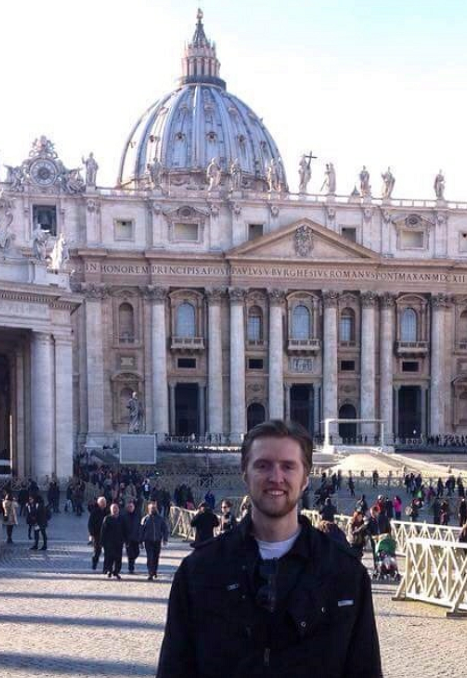Minneapolis–Saint Paul International Airport
 Monday, December 7, 2020 at 3:33AM |
Monday, December 7, 2020 at 3:33AM |  Michael Rainville Jr |
Michael Rainville Jr | Article by Michael Rainville, Jr.
Nestled between the Twin Cities near the banks of the Mississippi and Minnesota rivers, the Minneapolis–Saint Paul International Airport (MSP) is an important transportation hub in the upper Midwest, and has contributed to the growth of the metropolitan area for 100 years.
The first alterations to the land MSP now occupies took place in 1915 when the Twin City Motor Speedway laid down a track. The speedway only lasted two years, but new suitors for the land were not far behind. In 1919, civic groups from Minneapolis and Saint Paul bought the vacant land and turned it into Speedway Field. The first hanger was constructed in 1920 and was used for airmail. A year later, three hangars for the National Guard Observation Squadron were constructed. Speedway Field, which also went by Snelling Field, would receive a name change later in 1921 to Wold–Chamberlain Field, in honor of two Minnesotan pilots who died in World War I.
 Photo of Wold-Chamberlain Field taken in 1929 with the racetrack still present.
Photo of Wold-Chamberlain Field taken in 1929 with the racetrack still present.
Northwest Airways, later named Northwest Airlines, established their home base at Wold-Chamberlain Field in 1926, which kicked off their eighty-two-year run at MSP until their merger with Delta in 2008. On July 5, 1927, Northwest Airways started their first passenger route with service from St. Paul to Chicago. Back then, a one-way ticket would cost $50, or over $700 after inflation. The twelve-and-a-half-hour flight had stops in La Crosse, Madison, and Milwaukee. Soon after in 1928, a U.S. Navy Squadron hanger was built, and later that year the Minneapolis Park Board purchased the airfield for $165,000, or over $2.5 million after inflation.
With Saint Paul opening up Holman Field in the 1920s, both airports fought for business. A unique way to make for money, Wold-Chamberlain Field offered sight-seeing trips for one or two dollars that lasted between seven and fifteen minutes. Northwest Airlines and Governor Harold Stassen recommended to state legislators that having one major airport would be more beneficial to the Twin Cities, and they lobbied in favor of Wold-Chamberlain Field. Northwest pulled out of Holman Field in 1941, and in 1943, the Metropolitan Airports Commission was created to operate the area’s airfields, including Wold-Chamberlain.
The Metropolitan Airports Commission immediately began planning Wold-Chamberlain’s expansion with the goal of making the Twin Cities an air hub post World War II. In 1944, the airfield was renamed to Minneapolis–St. Paul Metropolitan Airport/Wold-Chamberlain Field, and four years later, “Metropolitan” was replaced by “International.”
 1957 postcard
1957 postcard
 1962 photo of the nearly complete Lindbergh Terminal.
1962 photo of the nearly complete Lindbergh Terminal.
The Lindbergh Terminal, now known as Terminal 1, began construction in 1958. Over four years later in January of 1963, the 600,000 square foot, twenty-four gate, two concourse terminal began servicing passengers. The terminal underwent expansions in 1971 and ’72, with the last major expansion happening in 1986, the same year the Humphrey Terminal, now Terminal 2, was constructed.
MSP’s sleek look and rising success mixed with Minnesota’s notorious winters, made it the perfect location to film the 1970 film Airport, starring Burt Lancaster and Dean Martin. The same year Airport was released, a company began helicopter flights from MSP to downtown Minneapolis, St. Cloud, Rochester, and Mankato. Just four months after the downtown Minneapolis route started operation, the company stopped their helicopter service.
Annual passenger traffic through MSP has consistently increased over the past twenty years, with over 39.5 million passengers coming to MSP in 2019. COVID-19 put a hold on most people’s plans for 2020, but MSP’s future still looks bright. In the coming decade plus, the airport plans to expand both Terminal 1 and Terminal 2, adding fifteen new gates between the two terminals. The airport’s expansion progress can already be seen with the addition of a 5,000-spot parking garage and 290-room InterContinental hotel at Terminal 1, with concourse G’s expansion being the next project on the docket.
 Map of planned expansions.
Map of planned expansions.
From an open prairie, to a racetrack, to one of North America’s busiest airports, Minneapolis-Saint Paul International Airport is a vital cog in the Twin Cities machine.
- - - - - - - - - - - - - - - - - - - - - - - - - -
 About Michael Rainville, Jr.
About Michael Rainville, Jr.
A 6th generation Minneapolitan, Michael Rainville Jr. received his B.A. in History from the University of St. Thomas, and is currently enrolled in their M.A. in Art History and Certificate in Museum Studies programs. Michael is also a historic interpreter and guide at Historic Fort Snelling at Bdote and a lead guide at Mobile Entertainment LLC, giving Segway tours of the Minneapolis riverfront for 7+ years. Contact: mrainvillejr@comcast.net. Click here for an interactive map of Michael's past articles.
